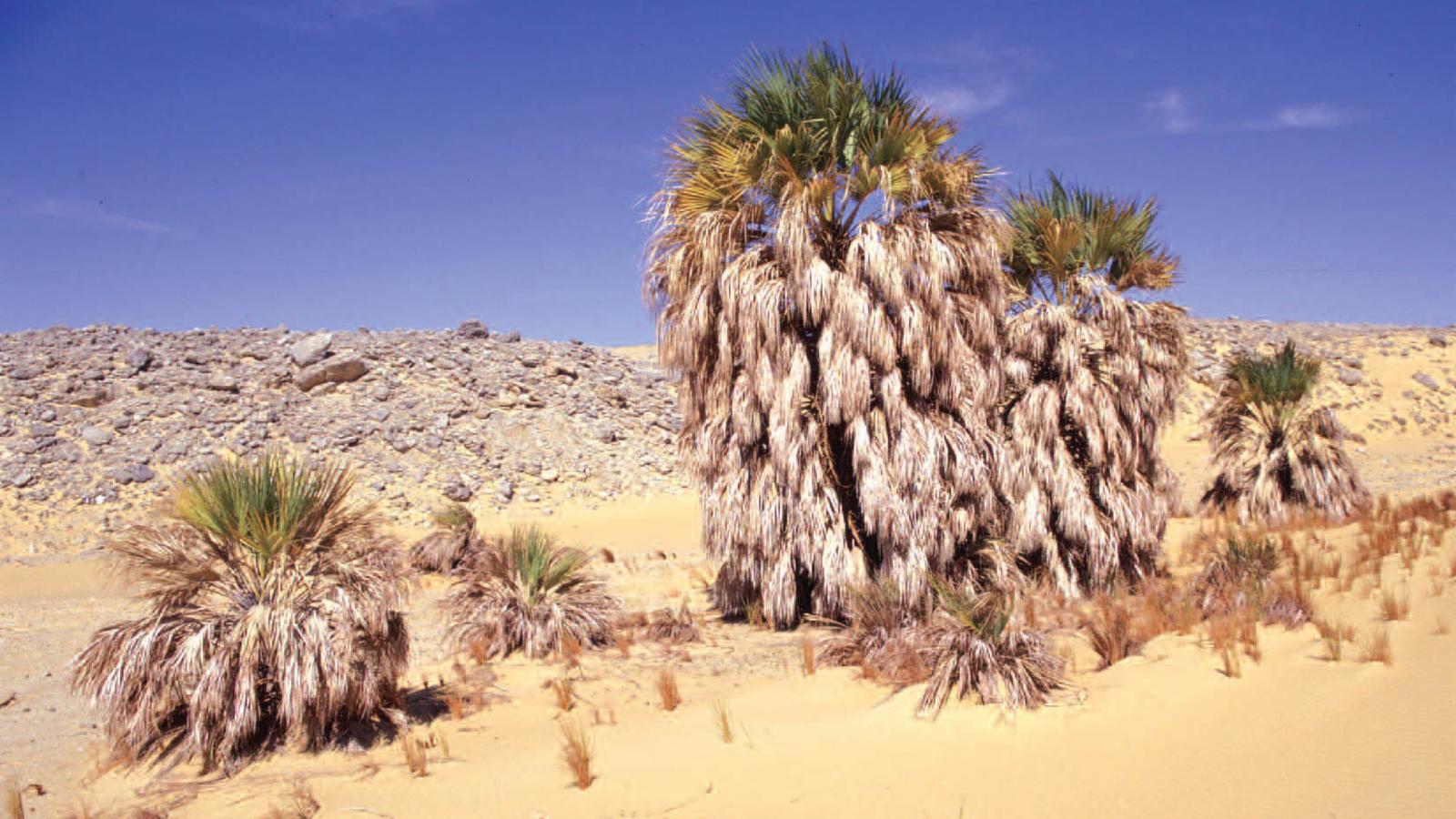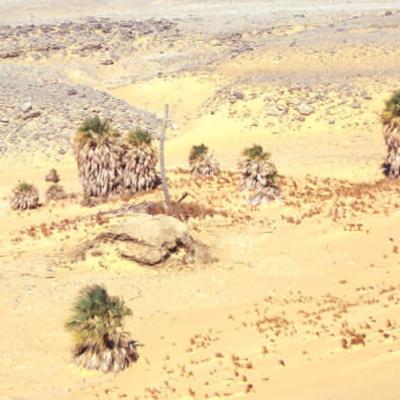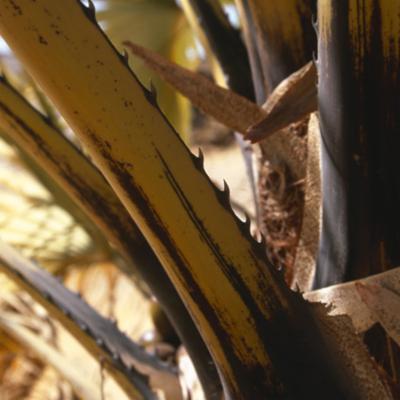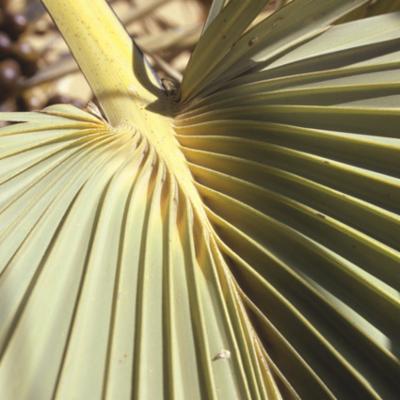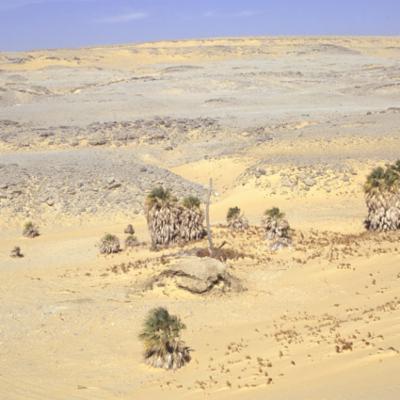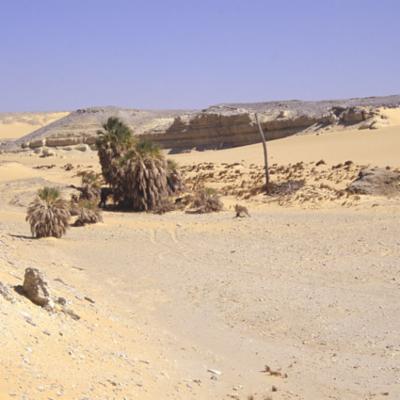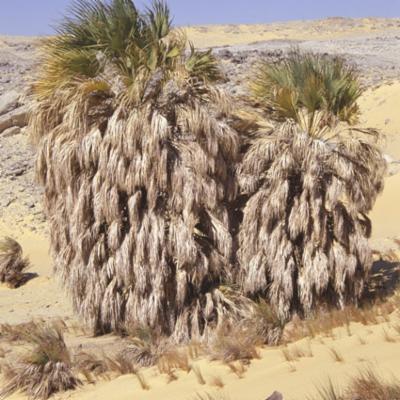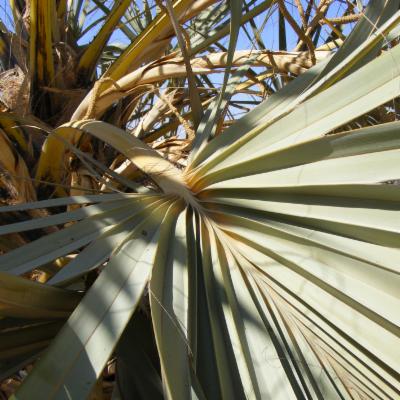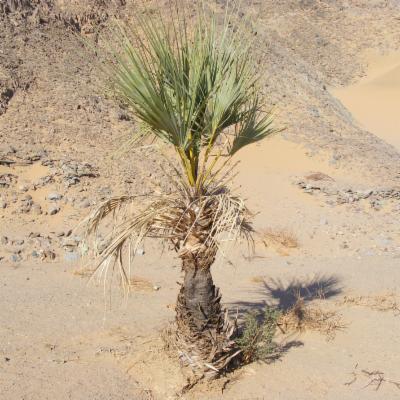Geography and distribution
Medemia argun is restricted to a few localities in the Nubian Desert oases of southern Egypt and northern Sudan. This region is so arid that consecutive years pass without any rain falling. Medemia argun , as with all desert palms, can only grow in oases where ground water occurs.
Description
The argun palm is a dramatic single-stemmed tree palm with fan-shaped leaves that are glaucous blue (blueish-green with a whitish bloom) and have bright yellow petioles (leaf stalks). It is dioecious, meaning that individuals are either male or female.
It produces inflorescences (flower-bearing parts) with numerous catkin-like branches. The female bears plum-shaped fruits which are purple-black when ripe. The fruit flesh is very thin and surrounds a large seed. The fruits fall from the tree and lie baking in the intense desert sun.
Though desert mammals appear to eat the flesh, the main dispersal agent could be water during flash floods following very infrequent rains.
Germinating seeds root very deeply indeed, presumably as an adaptation to finding ground water as quickly as possible.
Threats and conservation
The habitats in which Medemia argun occurs are sparsely inhabited. Nevertheless, the palm has experienced considerable pressure. Records from the late 19th century onwards indicate that exploitation of the leaves of Medemia has been a serious concern for many years, and evidence of destructive leaf harvesting can be found even today. In most sites, the population size is very small and vulnerable to accidental damage or even vandalism (for example by burning). None of the known Medemia populations falls within a protected area.
A team led by the Egyptian Environmental Affairs Agency, in collaboration with Kew's palm experts, is currently exploring the oases of the Egyptian Nubian Desert to complete a census of Medemia populations in the area and work towards a conservation management plan of the oases and their palms.
Uses
The leaves are used for weaving, for example to make ropes. It has been reported that the fruits are edible, but with so little fruit flesh and so hard a seed, it is hard to imagine them being palatable. According to Loutfy Boulos, the fruits are buried for a period, during which the endosperm develops a sweet taste similar to coconut.
Cultivation
Medemia argun has been cultivated by palm specialists as a result of seed introductions from Sudan. It needs a deep root run to germinate and establish successfully.
This palm is grown at Kew in the Jodrell Glasshouse (one of the behind-the-scenes glasshouses). Here the nursery collection of palms is grown, as well as plants that are being used for study in the Jodrell laboratories.
The palm is grown in a pot in a dry sunny position (under glass). The ideal temperature range is 18 to 21˚C. The compost used is a mix containing 10% 9mm loam, 45% coir and 45% Sylvafibre with Osmocote and kieserite. To this mix some perlite, Seramis, grit and sand are added. The aim is to grow the palm in an open, free-draining mix. A liquid feed is provided twice weekly. Apart from this liquid the pot is only watered when the substrate in the pot looks dry.
Medemia argun has not been propagated in the Jodrell Glasshouse as it has not yet produced material suitable for nursery propagation. It is subject to occasional pest infestations of mealy bugs and soft scale insects when grown under glass.
The argun palm at Kew
There are several archaeological specimens of Medemia argun in Kew's Economic Botany Collection. Kew also holds specimens collected by Speke and Grant on their celebrated expedition to discover the source of the Nile in 1863.

